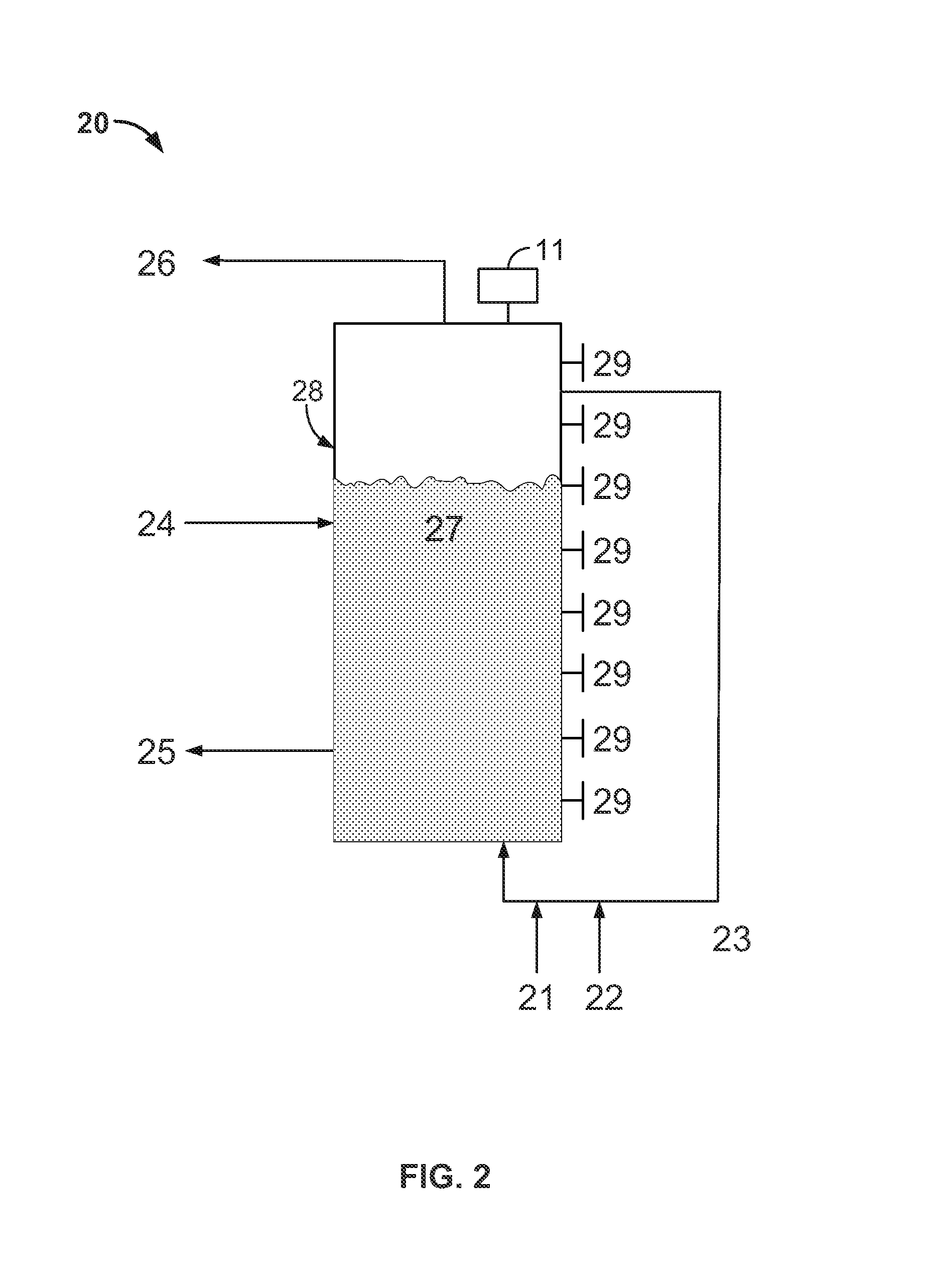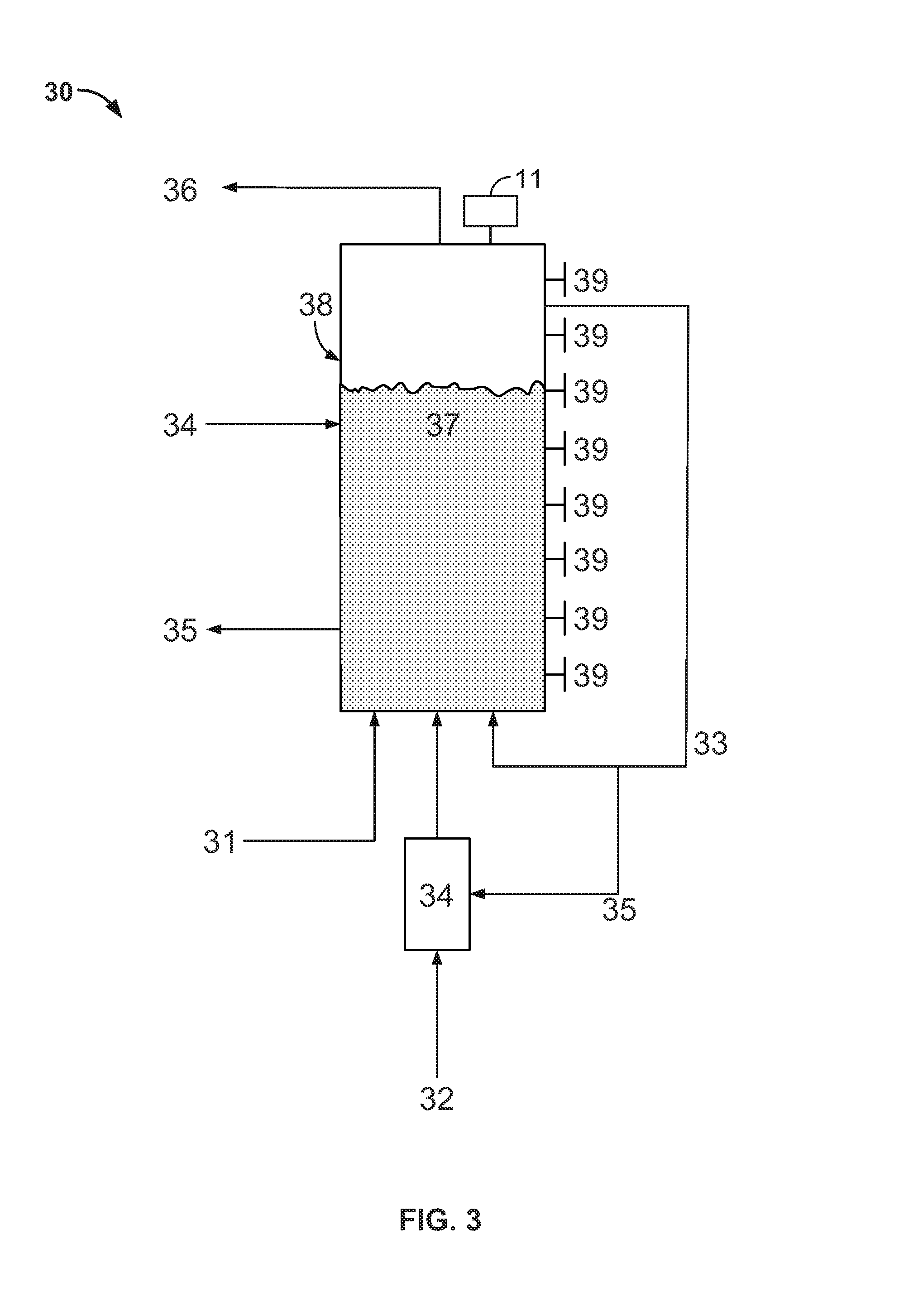Recovering a caustic solution via calcium carbonate crystal aggregates
a technology of calcium carbonate crystal aggregates and caustic solution, which is applied in the field of recovering caustic solution from carbonate solution, can solve the problems of large rotary kiln, high cost, and difficult operation of equipment, and achieve the effect of reducing the spontaneous nucleation of new calcium carbonate crystals, increasing hardness or resistance to crushing, and reducing the porosity of calcium carbonate crystals
- Summary
- Abstract
- Description
- Claims
- Application Information
AI Technical Summary
Benefits of technology
Problems solved by technology
Method used
Image
Examples
Embodiment Construction
[0081]The systems and processes described in the present disclosure, in some implementations, segregates the reactions (1) and (2) mentioned above into different units within the processes instead of allowing these reactions to occur within a common environment and / or unit. The systems and processes described in the present disclosure also use a different process and apparatus, within which reaction (2) takes place, as compared to convention systems and processes. This apparatus, a fluidized-bed reactive crystallizer (pellet reactor), enables the production of large, low porosity pellets that are easier to handle and dewater than the above mentioned lime mud.
[0082]This pellet reactor technology is currently used in applications within the water softening and water treatment industries under significantly different conditions, environments, chemistry and equipment configurations, and for different end results, than as it is applied in the systems and processes described here. For exa...
PUM
| Property | Measurement | Unit |
|---|---|---|
| volume | aaaaa | aaaaa |
| volume | aaaaa | aaaaa |
| volume | aaaaa | aaaaa |
Abstract
Description
Claims
Application Information
 Login to View More
Login to View More - R&D
- Intellectual Property
- Life Sciences
- Materials
- Tech Scout
- Unparalleled Data Quality
- Higher Quality Content
- 60% Fewer Hallucinations
Browse by: Latest US Patents, China's latest patents, Technical Efficacy Thesaurus, Application Domain, Technology Topic, Popular Technical Reports.
© 2025 PatSnap. All rights reserved.Legal|Privacy policy|Modern Slavery Act Transparency Statement|Sitemap|About US| Contact US: help@patsnap.com



